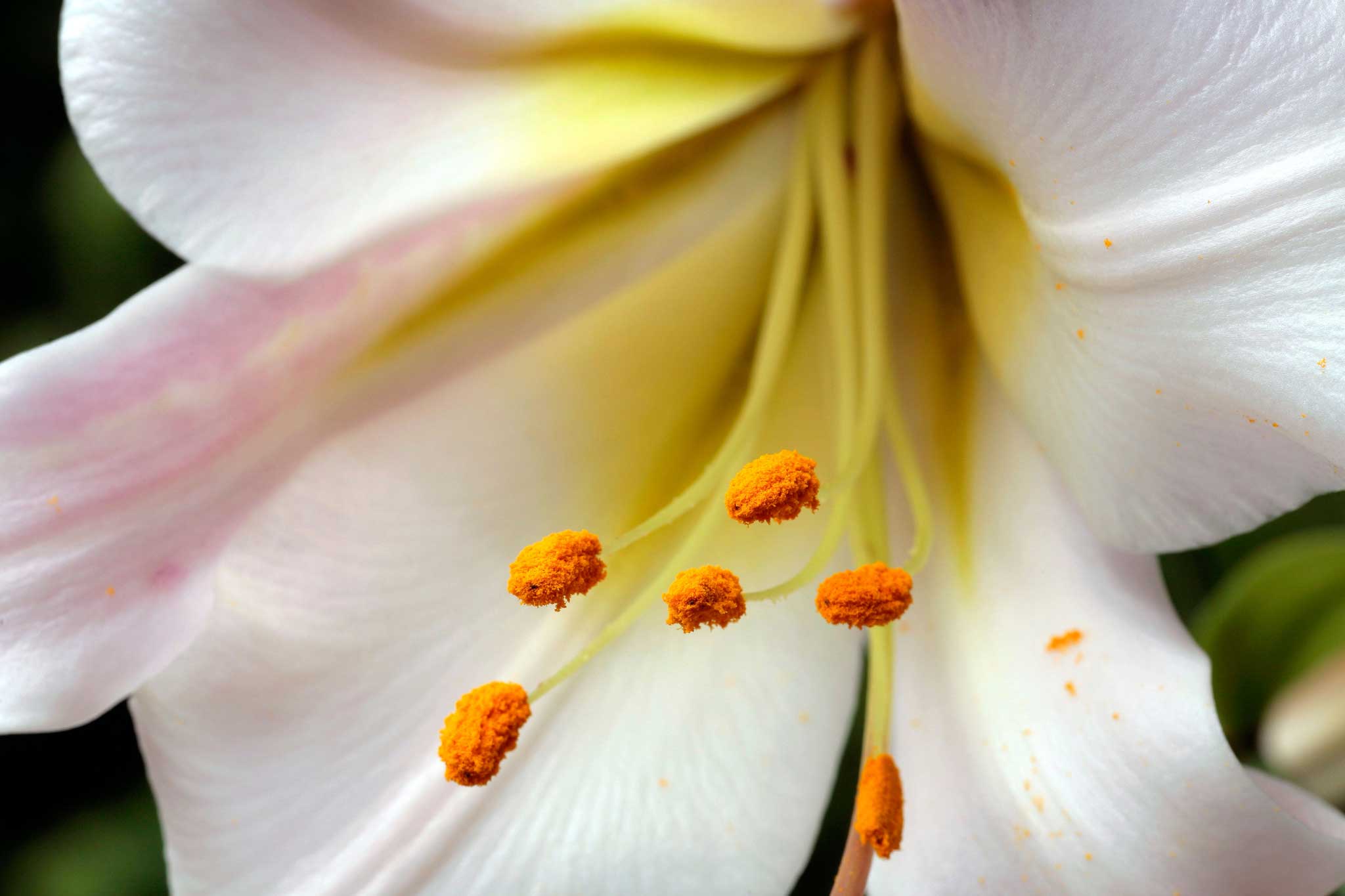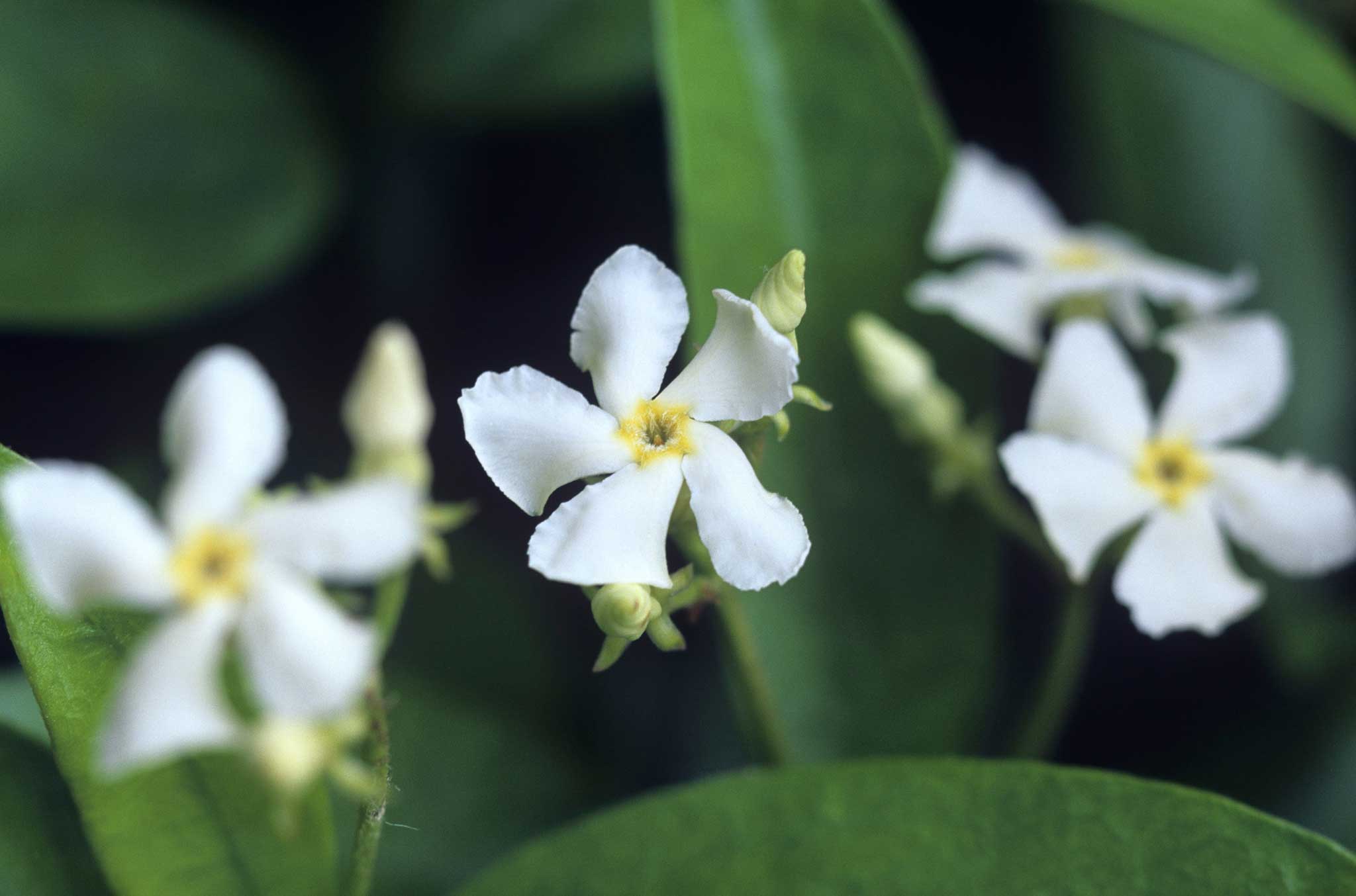Anna Pavord's top tips on the flowers to plant for a sweeter-smelling patch
Colour may be all-important in a garden, but don’t forget scent, says our horticultural expert

For plant breeders, scent in flowers is an irritation. They know we like it, but it can't be manipulated as easily as other characteristics of a flower. One of them explained to me how scent genes are often locked in with other traits such as colour or size. While the breeders are waving their genetic wands, trying perhaps to make a flower bigger, scent fades away unseen. In a rose or a sweet pea, this is a disaster. Why anyone ever buys a rose without a scent is a mystery. As a race, the old roses still have the edge over more modern Hybrid Tea types, but deep cerise pink 'Wendy Cussons' though an awkward grower, smells richly of attar of roses, velvety crimson 'Ena Harkness' is gorgeously perfumed and, as you'd expect from the name, 'Fragrant Cloud', raised in Germany in 1968 is also worth growing for its smell.
In our last garden, I was particularly fond of 'Constance Spry' a modern climbing or shrub rose in the old-fashioned style with huge, cabbagey, double-pink flowers that carry a spicy smell. We planted it on the front of the house and at night, the scent drifted through the open bedroom window in an almost hypnotic way. The damask rose 'Ispahan' with small, tightly-packed flowers of a slightly deeper pink was another winner for smell, as were the Hybrid Musk roses 'Penelope' and 'Buff Beauty', both of which I've planted again in our new garden.
In choosing a rose, colour would certainly be the first thing on my mind, but after that, I'd check that scent was there, too. Instinctively perhaps we think of scent coming most powerfully from deep red roses (though not the ones that flood into the country for Valentine's Day). But 'Fruhlingsgold', a pale creamy shrub rose, has a lovely light, fruity scent and the big but wild-looking flowers are so plentiful, they pull the branches over into a great tent of blossom. The ground-covering rose 'Grouse', pale pinkish-white, also has a strong, musky smell, more intense in a hot summer than a cool, overcast one.
In the garden generally, I'd say that many of the most heavily-scented flowers are white. Think of mock orange, summer jasmine, madonna lilies, gardenia, lily of the valley, Trachelospermum jasminoides, choisya, Nicotiana sylvestris. It's almost as if they have intensified their smell to compensate for the lack of colour.
Trachelospermum is a twining climber, just the sort of plant you should put close to where you sit on a summer evening. It is evergreen, neat in growth, and flowers in August when we are more than ready for some new delight in the garden. All of those are virtues, even if it were not also deliciously scented. The flowers are about the size of a jasmine's, but star-shaped and pure white, beautifully set off against the glossy pointed leaves. As they flower on old wood, they need no pruning. All you have to do is provide a series of wires strung out against the wall and occasionally help a stray growth find something to hang on to. It is one of the best and most useful of all scented plants.

Unfortunately, last year, I did not notice that the trachelospermum's juicy new shoots had been invaded by aphids. But there was no way that, later on, I could miss the sooty mould that covered all the lower leaves. The two things often go together. Aphids excrete a sweet sticky mess as they feed. The mess drops on to foliage and attracts the mould, which is hideously disfiguring. The leaves, usually so glossy, are sad, matt, dulled by a dark grey film that is hard to get rid of. Head gardeners of the old school would set a minion to work with a bowl of soapy water, cleaning each leaf separately with his thumbs. I was hoping the ferocious cloud bursts we've had recently would do the job for me. Sadly, they haven't.
Sooty mould is not, in itself, a problem. It is not a parasite. But because it covers the surface of the leaf so thickly, no light gets through and the leaf can't photosynthesise. Eventually this will weaken the plant. This year, I'll be watching out for the wretched aphids.
Blue flowers have least smell: ceanothus, forget-me-not, delphinium, campanula, agapanthus. The exception is the bluebell with its rich, spicy smell. One of the most memorable moments of May is fixed for me in the bluebell wood at Coton Manor, Northamptonshire, where waves of scent billowed over my perch as I watched the trees trace shadows over the flowers. But for the most part, blue flowers are pollinated by bees and they, like us, work more by sight than smell.
A strong, sweet smell is a characteristic of many winter-flowering plants, perhaps because there aren't so many pollinating insects around then and the flowers have to work harder to attract them. Chimonanthus, daphne, mahonia, sarcococca, honey-scented Viburnum bodnantense, witch hazel – they all smell superb and at a time of the year when we most need a lift. But now we're into summer and in every garden there should be plenty of scented plants so we can lie on the grass, and let the different smells drift over us like music heard from faraway. Here are five of my favourite scented plants for summer:
Lathyrus odoratus (sweet pea)
Anything with odoratus in its name is likely to smell, though not always as wonderfully as the annual sweet pea (the perennial L. latifolius has no smell at all). Easy to raise from seed planted in autumn or spring. For the best scent, go for old varieties such as 'Matucana'.
Lilium regale (regal lily)
One of the most familiar of all lilies, easy to grow and wonderfully scented. The white trumpets begin to open in late June and last a long time. Expect it to grow at least a metre/3ft tall. Good in a border, a pot, or among shrubs. Easy from seed. Try it.
Magnolia x wieseneri (magnolia)
The most mesmerising of all magnolias for me, because the buds take so long to open. With us, it is making a wide, spreading bush, an ideal habit to appreciate the flowers. They are white, with a complex boss of stamens in the centre, rather like a water-lily. The scent is wildly exotic.
Nicotiana sylvestris (tobacco plant)
This is the bulkiest of the tobacco plants with huge, bright green leaves that take up rather too much room. But everything is forgiven when the flowers start to appear in August, long-necked white trumpets, exquisitely scented (though only in the evening).
Trachelospermum jasminoides (star jasmine)
Twining evergreen climber, that with support will get up to 9m/28ft. Star-shaped white flowers over a long period from August onwards. Better planted in late spring than in autumn or winter. Find it a warm, sheltered wall as it is slightly tender.
Join our commenting forum
Join thought-provoking conversations, follow other Independent readers and see their replies
Comments